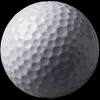by Jeff White, Sales Manager of Field Technical Services, Induron Coatings
![Jagged-surface-fr-Davies[1]](https://www.induron.com/blog2/wp-content/uploads/2011/06/jagged-surface-fr-davies14.jpg?w=271)
The article states that “after abrasive blast cleaning, the surface profile shall be angular and 1.5 to 3.0 mils deep.” While some of the newer higher-build, 100% solids coatings will require more than a 1.5-3.0 mil profile, we agree wholeheartedly that an angular profile is crucial, especially for immersion service.
It is our opinion, that an angular profile is best achieved using non-metallic grit that is not recycled. When using a recycled grit/shot mix a peened profile is much more likely to result than an angular profile. When the grit is thrown against the substrate multiple times, it begins rounding, and transfers that rounded shape to the surface. The term “peened” means rounded or dimpled, much like the cover on a golf ball.

Do you think it would be easier to climb a wall that has a dimpled (peened) surface or one that has jagged (angular) surfaces to hold onto? Obviously, the angular surface would be easier to climb. It is no different with paint. In immersion service which is one of the more severe applications for coatings, the paint needs that angular profile to insure that it can hold on to the substrate to provide the intended service life.
We love to see those dimples at work making a golf ball drive farther, but not on our prepped surfaces. In coatings, unlike golf, friction is our friend.




